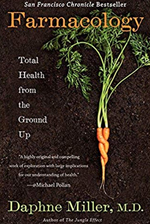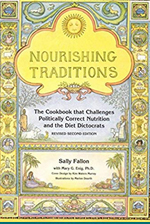Before the 1950’s we sourced our food locally. Our local butcher provided meat from a local pasture. You could get eggs that were freshly laid the same morning. And you could get fish sourced from nearby waters.
Today we source food from all over the U.S. — and all over the world. And with the world population expected to reach 9 billion by 2023, large & industrial food producers often use chemical inputs, pesticides, and herbicides to manage crops in order to increase yields to support this growing population.
Glyphosate, a common herbicide, is primarily used by conventional food producers to kill weeds that compete for water, nutrients, and space with crops. Glyphosate, also known by the brand name Roundup, is in more than 80% of the U.S. food supply and it is now linked to numerous diseases such as Cancer, ADHD, Autism, Parkinson’s, kidney disease and Alzheimer’s; it kills weeds, but its unintended consequences are profound and linked to modern day plagues. The target of glyphosate in weeds is also an enzyme found in over 2,000 species of bacteria, which are part of the human microbiome and that of other animals.
But now, in a recent independent study by the organic grain company, Tropical Traditions, the company finds that organic grains such as wheat, barley, oats, spelt and einkorn, largely sourced from Montana and Idaho, contain glyphosate residue at levels almost the same as conventional grains. This data should be alarming to those who buy organic and assume organic is always safe to eat.
The big question now is how glyphosate is getting into organic crops?
The answer is unclear, but Tropical Traditions speculates that it may be happening for two possible reasons:
- Glyphosate may be falling on crops through rainwater or irrigation. This is especially alarming because it also implies that other non-grain products may be affected.
- Glyphosate may also be drifting from crop duster aircraft servicing conventional farms, because conventional farms are often close in proximity to organic farms.
Conventional farms using glyphosate and other chemicals sit in close proximity to organic farms around the world. But water isn’t separated from one farm to the next. The water runs off from conventional farms into irrigation ditches and streams that supply water to organic farms downstream. Nothing in the environment is separated. Common sense should counter the arguments of the safety of a chemical that kills every plant that is not engineered to tolerate it. Look at a field where glyphosate has been sprayed, not a blade of grass is living after just a few days.
What can we do? The American consumer is still the most powerful force in the U.S. to affect change. Consumer buying power changes markets when enough people refuse to buy products. Educate yourself on product ingredients and check the suppliers. Speak to other consumers about glyphosate and the associated health dangers in the food. [Insert the product report that was published last year – Cherrios and Stacy Pita Chips are at the top of the list – most cereals – Post, Kelloggs, etc. – we need to insert this info].
If you leave in a major agricultural state such as California, Iowa, Montana, Kansas, etc. contact your local representatives and get involved in educating them and working to change state agricultural policy.
Scientist working in microbiome research in soils, water, plants and humans are beginning to look for ways to clean toxins like glyphosate and other herbicides, pesticides and chemicals from our environment.
And lastly, Support your local farms, both certified and non-certified. These farms typically do not use chemicals, and if they do, in smaller quantities and of a more innocuous nature. You may also get answers to your questions about farming practices more easily without having to be a detective because these growers are part of your community. The more we can displace industrial food, the safer consumers will be, and the more economic opportunities will exist for young and aspiring farmers in small rural communities across the US and the world. This kind of consumer-based pressure will inevitably result in increased government regulation and the compliance of industrial farmers to meet consumer demand. This kind of movement is part of a new spiritual awareness permeating society, bringing people together to live a longer, happier and more connected life.
Related articles:
https://www.cnn.com/2019/02/14/health/us-glyphosate-cancer-study-scli-intl/index.html)
https://www.healthfreedoms.org/certified-organic-grain-found-to-be-contaminated-with-glyphosate/




